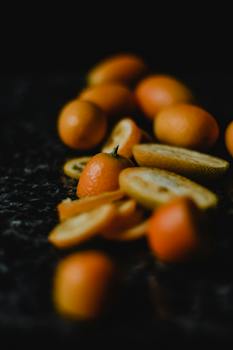

-
Table of Contents
Unveiling Nature's Secrets: Discover the Botanical Origins of Your Favorite Spirits.
Introduction
Unveiling Nature's Secrets: Alcohol-Producing Plants is a comprehensive exploration of various plant species that have been historically used for alcohol production. This study delves into the fascinating world of botanical sources that have been utilized by humans for centuries to create alcoholic beverages. By uncovering the secrets behind these plants, this research aims to shed light on the cultural, historical, and scientific aspects of alcohol production, providing valuable insights into the diverse range of plants that have played a significant role in this process.
The History and Cultural Significance of Alcohol-Producing Plants
Unveiling Nature's Secrets: Alcohol-Producing Plants
Alcohol has been an integral part of human culture for thousands of years. From ancient civilizations to modern societies, alcohol has played a significant role in social gatherings, religious ceremonies, and even medicinal practices. But have you ever wondered where this beloved beverage comes from? The answer lies in the fascinating world of alcohol-producing plants.
The history of alcohol-producing plants dates back to ancient times. In fact, the earliest evidence of alcohol production can be traced back to around 7000 to 6600 BCE in China. It was during this time that humans discovered the art of fermenting grains, such as rice and millet, to create a beverage known as mead. This discovery marked the beginning of a long and rich history of alcohol production.
As civilizations developed and expanded, so did the variety of alcohol-producing plants. In ancient Egypt, for example, beer was a staple in the daily lives of both the rich and the poor. The Egyptians brewed beer using barley, which was not only a source of nutrition but also a symbol of divine sustenance. Beer was so deeply ingrained in Egyptian culture that it even had its own goddess, Tenenit, who was believed to protect the brewing process.
Moving forward in time, we find that alcohol-producing plants played a crucial role in the development of many ancient civilizations. In Mesopotamia, the birthplace of modern civilization, the Sumerians worshipped Ninkasi, the goddess of beer. They believed that she had taught them the art of brewing and that beer was a gift from the gods. The Sumerians brewed beer using barley, which they considered a sacred grain.
Alcohol-producing plants also held great cultural significance in the Americas. The Mayans, for instance, had a deep reverence for cacao, which they used to produce a fermented beverage called xocoatl. This beverage was reserved for the elite and was often consumed during religious ceremonies. The Mayans believed that cacao had divine properties and that it connected them to the gods.
Throughout history, alcohol-producing plants have not only been used for their intoxicating effects but also for their medicinal properties. In ancient Greece, for example, wine was believed to have healing powers. Hippocrates, the father of modern medicine, prescribed wine as a remedy for various ailments. Wine was also used as an antiseptic and an anesthetic during surgical procedures.
In addition to their cultural and medicinal significance, alcohol-producing plants have also played a role in shaping economies. The cultivation and trade of these plants have been a source of wealth and power for many civilizations. In medieval Europe, for instance, the production of wine became a lucrative industry. Vineyards were established, and wine became a valuable commodity that was traded across borders.
In conclusion, the history and cultural significance of alcohol-producing plants are deeply intertwined with human civilization. From the ancient Chinese mead to the Mayan xocoatl, these plants have shaped our cultures, religions, and economies. They have been revered as gifts from the gods, used for medicinal purposes, and enjoyed in social gatherings. So, the next time you raise a glass, take a moment to appreciate the rich history and secrets that lie within the alcohol-producing plants that have brought us so much joy throughout the ages.
Exploring the Science Behind Alcohol Production in Plants

Unveiling Nature's Secrets: Alcohol-Producing Plants
Alcohol has been a part of human culture for thousands of years, with its production dating back to ancient civilizations. While we often associate alcohol production with the fermentation of grains or fruits, it may come as a surprise that there are plants in nature that can produce alcohol as well. In this article, we will explore the science behind alcohol production in plants, uncovering the secrets of nature's own distilleries.
Plants have a remarkable ability to produce a wide range of chemical compounds, and alcohol is no exception. The process of alcohol production in plants begins with the breakdown of sugars through a process called fermentation. This natural process occurs when yeast or bacteria convert sugars into alcohol and carbon dioxide. While yeast is the most common microorganism responsible for fermentation, certain plants have evolved to produce their own alcohol through specialized structures.
One such plant is the Agave, a succulent native to Mexico. Agave plants have been used for centuries to produce a traditional alcoholic beverage known as Mezcal. The heart of the Agave plant, called the piña, contains high levels of fructans, a type of sugar that can be fermented into alcohol. The piñas are harvested, roasted, and crushed to extract the juice, which is then fermented and distilled to produce Mezcal. This unique process showcases how plants have adapted to produce alcohol in their own unique way.
Another plant that produces alcohol is the Sugar Cane. Sugar Cane is a tall perennial grass that is cultivated in tropical regions for its high sugar content. The juice extracted from the Sugar Cane is rich in sucrose, a type of sugar that can be fermented into alcohol. The juice is first clarified to remove impurities and then fermented using yeast. The resulting liquid, known as molasses, is then distilled to produce rum. The production of rum from Sugar Cane highlights the versatility of plants in alcohol production.
Moving away from traditional alcoholic beverages, we find that even common fruits can produce alcohol. Apples, for example, contain natural sugars that can be fermented into alcohol. This process is utilized in the production of apple cider and apple brandy. The apples are crushed to extract the juice, which is then fermented using yeast. The resulting liquid is then aged in barrels to develop the distinct flavors of apple cider or apple brandy. This demonstrates how plants can provide a diverse range of flavors and aromas in alcohol production.
In conclusion, the science behind alcohol production in plants is a fascinating subject that unveils nature's secrets. From the Agave plant's unique fermentation process to the Sugar Cane's versatility in rum production, plants have evolved to produce alcohol in their own distinct ways. Even common fruits like apples can contribute to the world of alcoholic beverages. Understanding the science behind alcohol production in plants not only deepens our appreciation for the natural world but also highlights the ingenuity of nature's own distilleries. So, the next time you raise a glass, remember the plants that played a role in creating that delightful libation.
Unveiling the Medicinal Properties of Alcohol-Producing Plants
Unveiling the Medicinal Properties of Alcohol-Producing Plants
Alcohol has been used for centuries as a social lubricant, a means of relaxation, and even as a form of medicine. While excessive alcohol consumption can have detrimental effects on health, when used in moderation, alcohol can actually have some surprising medicinal properties. In fact, many plants that are used to produce alcohol also contain compounds that have been found to have various health benefits.
One such plant is the grapevine, which is used to produce wine. Grapes are rich in antioxidants, particularly resveratrol, which has been shown to have anti-inflammatory and anti-cancer properties. Studies have also suggested that moderate wine consumption may have cardiovascular benefits, such as reducing the risk of heart disease. However, it is important to note that these benefits are associated with moderate consumption, and excessive alcohol intake can have the opposite effect on health.
Another alcohol-producing plant with medicinal properties is the hop plant, which is used to flavor and preserve beer. Hops contain a compound called xanthohumol, which has been found to have anti-inflammatory and anti-cancer effects. Additionally, hops have been used traditionally as a sleep aid and to relieve anxiety. However, it is worth noting that the concentration of xanthohumol in beer is relatively low, so the medicinal benefits may be limited.
Moving away from alcoholic beverages, another plant with medicinal properties is the agave plant, which is used to produce tequila. Agave contains a type of fiber called inulin, which acts as a prebiotic and promotes the growth of beneficial gut bacteria. This can have a positive impact on digestion and overall gut health. Additionally, agave has been used traditionally in Mexican folk medicine to treat various ailments, such as wounds and digestive issues.
Furthermore, the juniper plant, which is used to produce gin, has long been used for its medicinal properties. Juniper berries contain compounds called terpenes, which have been found to have antimicrobial and anti-inflammatory effects. Juniper has been used traditionally to treat urinary tract infections and digestive issues. However, it is important to note that excessive consumption of gin or any alcoholic beverage can have negative effects on health, so moderation is key.
In conclusion, alcohol-producing plants have more to offer than just the alcoholic beverages they are used to create. Many of these plants contain compounds that have been found to have various medicinal properties. From the antioxidant-rich grapes used to produce wine, to the sleep-inducing hops used in beer, to the gut-friendly agave used in tequila, and the antimicrobial juniper berries used in gin, these plants have been used for centuries for their health benefits. However, it is important to remember that moderation is key when it comes to alcohol consumption, as excessive intake can have detrimental effects on health. So, the next time you enjoy a glass of wine or a pint of beer, remember that you may be benefiting from nature's secrets.
Q&A
1. What are some examples of alcohol-producing plants?
Grapes, barley, corn, sugarcane, and potatoes are examples of alcohol-producing plants.
2. How is alcohol produced from these plants?
Alcohol is produced through a process called fermentation, where the sugars in these plants are converted into alcohol by yeast or bacteria.
3. What are some common alcoholic beverages made from these plants?
Wine is made from grapes, beer is made from barley, vodka is made from potatoes, rum is made from sugarcane, and whiskey can be made from corn or barley.
Conclusion
In conclusion, the study of alcohol-producing plants has unveiled nature's secrets regarding the production of alcohol. Through research and analysis, scientists have gained insights into the various plant species that possess the ability to produce alcohol, the biochemical processes involved, and the potential applications of these plants in various industries. Understanding nature's secrets in this field can contribute to the development of new and improved methods for alcohol production, as well as provide valuable knowledge for the pharmaceutical and biofuel industries.












